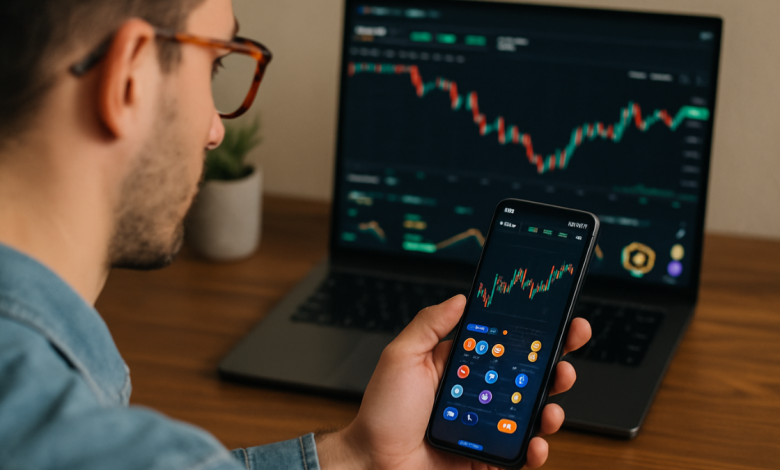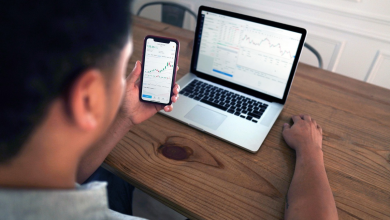How Gamification Is Enhancing the Trading Experience

The financial world is evolving rapidly, and one of the most exciting developments in recent years is the rise of gamification in trading platforms. The gamification trading experience has transformed how people interact with trading apps by making the process more engaging and accessible. This article explores how game mechanics are enhancing trader engagement, behaviour, and learning, supported by expert insights and credible research.
ALSO READ: How Cryptocurrency Trading Works in South Africa
What Is Gamification in Trading?
Gamification applies game design elements such as points, leaderboards, rewards, and social features to non-game contexts. In trading, this approach turns complex financial activities into fun, interactive experiences.
These features simplify trading for new investors and increase involvement among seasoned traders. For instance, users may earn badges for completing tutorials or receive instant feedback when executing trades, making the entire process feel less intimidating and more enjoyable.
Why the Gamification Trading Experience Matters
South African traders are increasingly using mobile and digital platforms. However, many beginners find traditional trading overwhelming due to its complexity. By creating an encouraging learning environment, gamification helps new traders experiment confidently and build their skills.
A study by the Ontario Securities Commission’s Behavioural Insights Team (BIT) found that gamification features like social trading and leaderboards led participants to trade 12–18% more than those without such features. This clearly shows the influence of gamification on trading behaviour.
How Gamification Enhances Engagement and Learning
Interactive Tutorials and Progress Tracking
Many platforms offer interactive tutorials that reward users with points or badges as they complete educational modules. This hands-on approach builds confidence and knowledge gradually.
Research from Netguru shows that gamification can boost customer engagement by 48% and increase user actions by over 200%. These figures highlight how game mechanics not only teach users but also encourage them to participate actively in trading.
Social Trading and Peer Influence
Social features such as leaderboards, copy trading, and chat rooms foster community and motivate traders to improve their skills. Watching peers perform well often pushes individuals to refine their strategies.
However, James Clunie, investment consultant and honorary professor at the University of Edinburgh, cautions:
“Gamification may encourage the ‘fun of the game’ to outweigh careful analysis, leading to speculative trading akin to gambling.”
Hence, while social elements enhance engagement, responsible design is crucial to prevent impulsive decisions.
Simplifying Trading Complexity Through Gamification
Trading can appear daunting with its jargon and complicated processes. Gamification breaks this down into manageable, step-by-step activities. Instead of overwhelming users with technical charts, platforms use visual progress bars, instant feedback, and simplified decision pathways.
According to Forbes, gamification makes financial tasks “fun and simple,” helping attract a wider audience to digital trading. This democratisation is particularly important in South Africa, where financial literacy continues to grow.
Ethical Considerations and Regulatory Oversight
Despite its advantages, gamification raises concerns about ethical design and consumer protection. Trading apps often use bright colours, animations, and sound effects similar to casinos to encourage frequent trading.
The CFA Institute’s white paper warns against such “dark patterns,” which may prompt impulsive trades disconnected from financial fundamentals (rpc.cfainstitute.org). Regulators in Europe, including Germany’s BaFin, are scrutinising these techniques to protect retail investors.
South African regulators and platforms must strike a balance between innovation and responsible design to safeguard consumers effectively.
CHECK OUT: Managing Risk in Forex Trading: Essential Tips for Gauteng Traders
The gamification trading experience is reshaping how South Africans engage with investing and trading. By combining education, social interaction, and game elements, platforms make trading more accessible and enjoyable.
Yet, as James Clunie advises, it is vital to recognise the risks of turning trading into mere entertainment that encourages impulsive behaviour. Platforms, regulators, and traders should collaborate to ensure gamification fosters informed and responsible participation.
In South Africa’s fast-evolving digital finance landscape, gamification offers exciting opportunities, but it also demands careful, ethical application to truly enhance the trading experience.
READ MORE: Mobile Trading: How Smartphones Are Democratizing Investment




